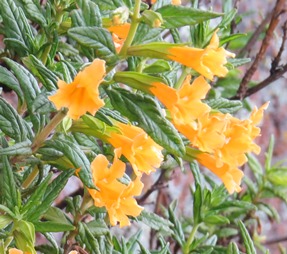
A. Contamination by microorganisms like Phytophthora cannot be seen. For day to day operations, assume that Phytophthora can be introduced anytime that a clean surface or material comes in contact with something that is contaminated.
B. Clean vs. Contaminated. For the purposes of producing Phytophthora-free nursery stock, the system can be divided up as follows:
|
Clean |
Contaminated |
|
no Phytophthora present |
Could have Phytophthora present; will be treated as if it is present |
|
Includes: 1. Materials that are innately free of contamination due to manufacturing conditions (e.g., new, uncontaminated plastic or paper, perlite, vemiculite). 2. Materials treated in a way that effectively eliminates Phytophthora (e.g., lethal heat or disinfectants. Note: fungicides do not eliminate Phytophthora) |
Includes: Almost everything else, but primarily anything that has the potential to have been in contact with soil, untreated water, or plant material (e.g., non-pasteurized sand, compost, forest product and peat moss used in container mixes). |
1. Clean + clean= clean. If all inputs (plant materials, container mix, pots, water) are clean and there is no contamination during production, the plants will remain clean.
2. Clean + contaminated = contaminated. Clean items should never be allowed to come into contact with contaminated materials.
3. Contaminated plants stay contaminated. Once contaminated, live nursery plants cannot be made clean again.
4. If unsure, assume it’s contaminated. Any tool, surface (including benches, hands, and gloves), or input (plant materials, container mix, pots, water) should be considered as contaminated unless you know or have documentation it was sanitized or treated to kill Phytophthora and was not subsequently contaminated.
5. The ground is always contaminated. The ground surface and any water in contact with it (including water splashed from it) should always be considered to be contaminated.
6. Contamination spreads with water splash. Clean plants or other materials that receive water splash from contaminated plants or surfaces will become contaminated. Water splash from rainfall-sized droplets in still air can reach a height of about 0.6 m (2 ft) and can spread laterally up to about 1.5 m (5 ft). Splash dispersal distances can be greater under windy conditions or with larger drops (such as runoff from roofs, etc.) or if generated by water under pressure (e.g., hose nozzle) or mechanical forces (e.g., vehicle splashing through a puddle).
All of the clean nursery production best management practices (BMPs) have their foundation in these basic concepts and rules. The BMPs are simply applications of these rules to specific situations encountered in the plant production process. Because it is not possible to anticipate every possible situation in every nursery, lists of BMPs can always have gaps. However, if all nursery workers internalize and consistently apply the basic concepts and rules of thumb above, they will be able to do the right thing in terms of working practices without constantly referring to specific BMPs. To use the bicycle tire analogy one more time, this is the equivalent of filling the tube with a sealant: all holes are filled and new ones are filled as they develop. You don’t necessarily need a detailed list of every possible hole if you intuitively work in ways that keep the holes filled.
These rules of thumb apply to soilborne Phytophthora species as well as a number of other soilborne pathogens. Some Phytophthora species also cause foliar infections. These include species such as P. ramorum, the sudden oak death pathogen, as well as some of the soilborne species that cause root rots. For P. ramorum and some other similar species that are primarily splash-dispersed foliar pathogens, airborne spores can be introduced into the nursery from infected native or planted hosts. Most of the risk is associated with hosts that are within the range of wind-blown water splash from leaf surfaces, so the risk is low at distances of more than about 10 m (30 ft) or more. Although many pest and disease issues will be minimized by following clean production practices, pathogens and insects that are capable of being dispersed via air over longer distances will not necessarily be eliminated by following these practices.